El Peón y su Poder
 |  |
Un abrazo para tod@s quienes me leen, les deseo muchos éxitos!
La semana pasada, inicie con una publicación sobre el juego ciencia, pues para mí, este deporte es uno de los más apasionantes y de gran ayuda para el crecimiento intelectual, sobre todo de los más chicos de la casa. En ese sentido, quisiera pienso escribir un poco más sobre este deporte conocido por todos como “Ajedrez”. Por supuesto, espero que muchos de ustedes se entusiasmen a la práctica de este, mi deporte favorito y con ello, llegar hasta sus hijos donde quiera que se encuentren. Es por ello, que podrán encontrar en esta y otras publicaciones, algunas herramientas necesarias, para la comprensión y entendimiento de este maravilloso juego.
En la publicación anterior (ver aquí), les hablé un poco sobre el juego y su historia, así como también sobre las piezas para llevar a cabo el juego. Por supuesto, ahora corresponde conocer, de qué manera puede moverse cada pieza. En esa oportunidad, les comenté que cada pieza tiene una forma particular de realizar su movimiento, así que a partir del presente post, voy explicar de qué forma se mueve cada pieza y por supuesto, la forma en la cual realizan las capturas durante el juego.
En esta ocasión, la pieza protagonista será: El Peón.

NÚMERO DE PEONES
Ya se ha dicho con anterioridad, que el juego de ajedrez se desarrolla entre 2 personas y cada una de ellas hace un movimiento por turno. Además, se dijo que cada jugador, posee entre sus piezas un total de 8 peones para cada uno. Es decir, la persona quien dirige las piezas blancas tiene 8 peones blancos y la persona con piezas negras tiene el mismo número (8) de peones negros. Asimismo, se explicó que dichos peones inician dispuestos en la segunda “fila” del tablero por cada bando.
Luego de un breve recuento sobre los peones y su posición inicial, puedo decir que esta pieza tiene un gran potencial dentro del juego. Sin embargo, para los que inician el aprendizaje sobre el ajedrez, los consideran sin mucho valor, por supuesto, es una apreciación que cualquiera pudiese tener, debido al tamaño que tiene con respecto a las demás y por lo que se ha dicho sobre el término peón dentro de las guerras en la vida real. A medida que se vaya conociendo un poco más sobre el juego, se podrán dar cuenta, que dicha pieza no es tan débil después de todo.
Por lo general, el juego inicia con el movimiento de un Peón. Principalmente se debe a que, ninguna pieza puede pasar por encima de otras, a excepción del Caballo. Así que la mejor opción es comenzar con alguno de los peones para dar apertura a la partida. Ya desde allí, se pueden hacer los siguientes movimientos, planteando las mejores estrategias que cada persona considere.

MOVIMIENTO Y CAPTURA DEL PEÓN
El Peón es una de las piezas más lentas del juego. Es considerada lenta, porque su movimiento es bastante restringido. En ese sentido, el movimiento del Peón es como sigue a continuación:
* Solo se mueve en línea recta por columnas y siempre hacia adelante, a menos que una pieza contraria o propia no se lo permita.
* Cuando esté en la casilla inicial, cualquier peón puede desplazarse 1 o 2 casillas, según lo decida el jugador y/o no haya otras piezas que interrumpan el avance.
* Luego de hacer el movimiento inicial, solo podrá desplazarse haciendo 1 movimiento por turno.
* El Peón no puede moverse hacia atrás. Es la única pieza que no puede desplazarse hacia atrás.
* Si hay alguna pieza que interrumpa su desplazamiento, no podrá avanzar hacia adelante (a menos que pueda capturar).
 |  | 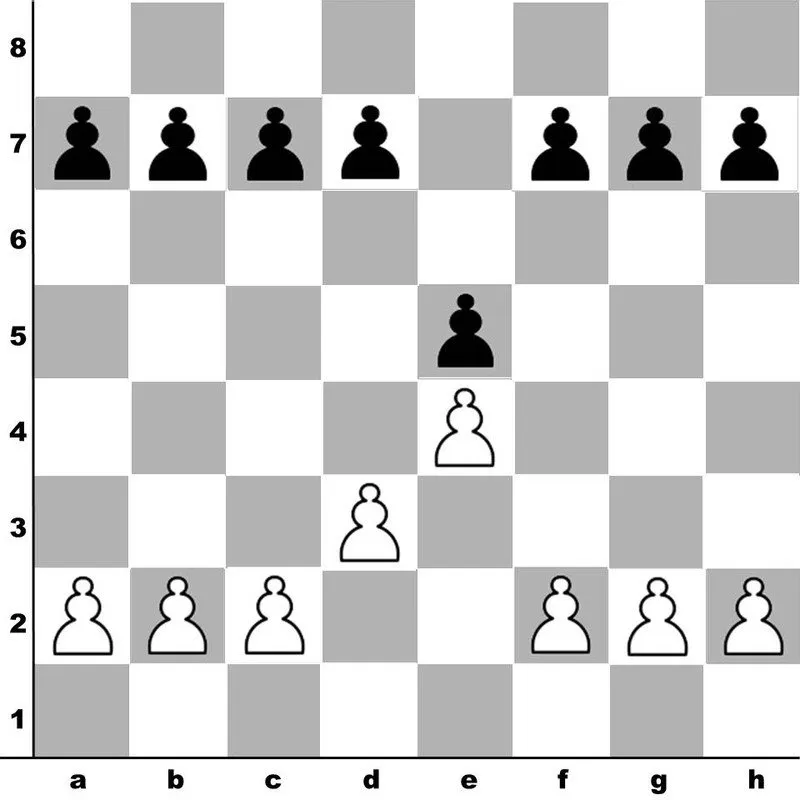 |
En cuanto a la “Captura” de Peón, se realiza cambiando un poco la cinética que se explicó anteriormente. Es la única pieza que al “comerse” a otra, debe hacer un movimiento diferente a su movimiento original. En ese sentido, el Peón Captura a cualquier pieza así:
* El Peón sólo puede Capturar a otra pieza, si la pieza contraria se encuentra en la casilla diagonal inmediata. Es decir, el peón “come” en diagonal. NOTA: en el caso de la Captura con Peón o con cualquier otra pieza, el procedimiento es retirar del tablero la pieza capturada y colocar la pieza con la que se ha capturado (en este caso el Peón) en la posición en la cual estaba la pieza que se ha retirado del tablero. Es decir, se “come” en el sitio.
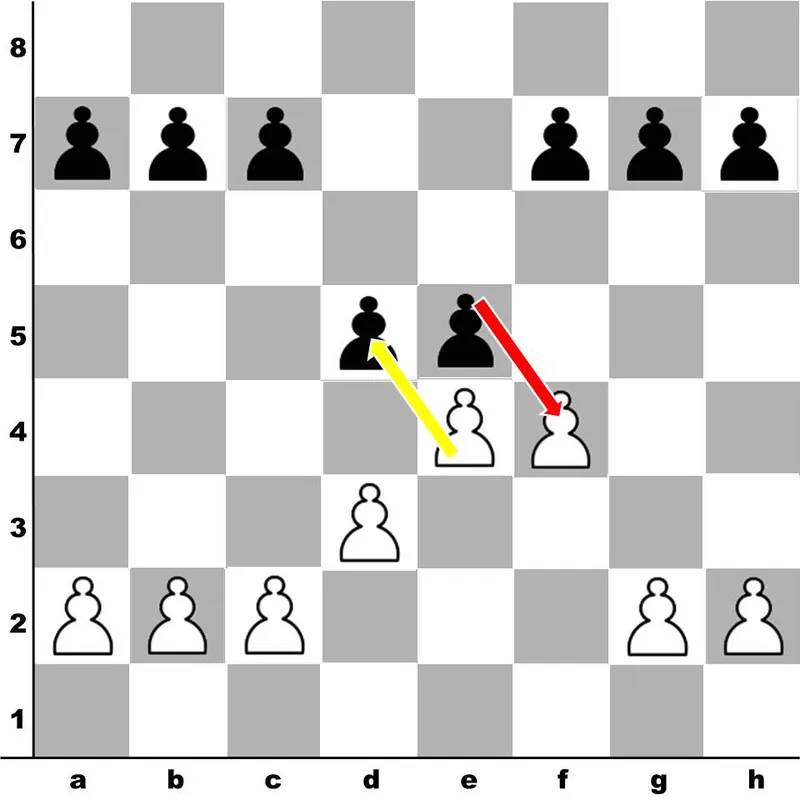 | 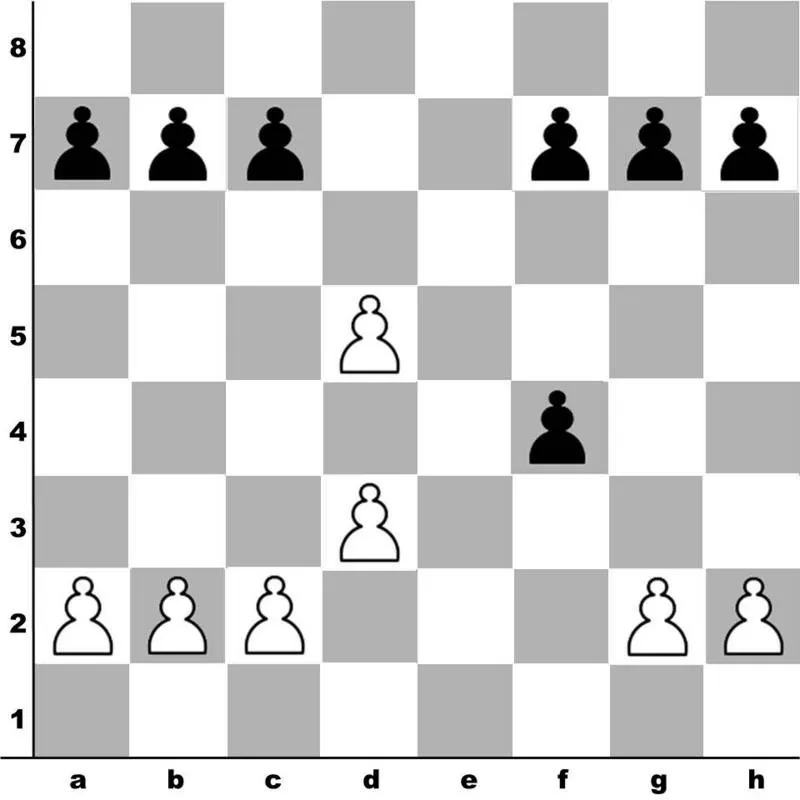 | 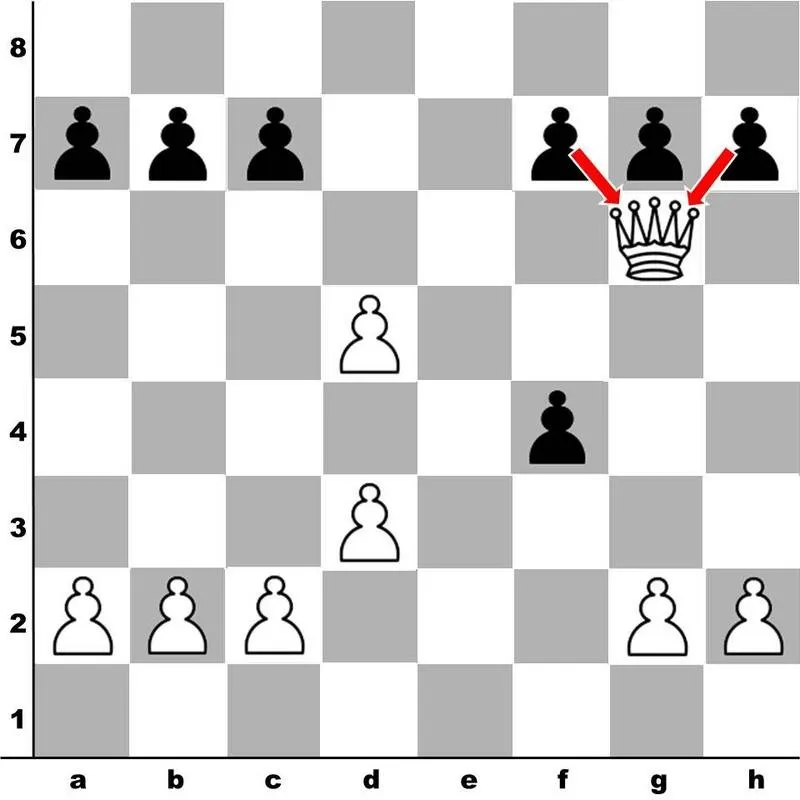 | 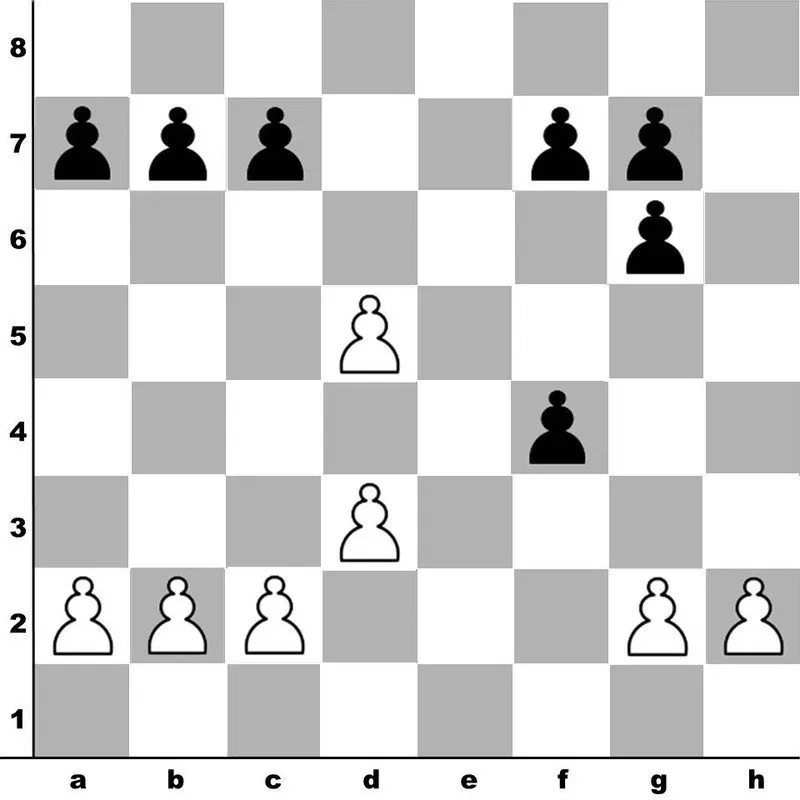 |

MOVIMIENTO ESPECIALES
Al inicio del presente escrito, les decía que el Peón era considerado débil por la mayoría de los ajedrecistas n sus inicios. Pues, para ser honestos, el peón estando en solitario, no tiene la fuerza que puede tener otra pieza dentro del tablero, como ya lo han visto, hasta sus movimientos son bastante restringidos. Sin embargo, en lo particular, considero que los peones cuando están unidos, es decir, cuando ya no están solos, poseen una gran fuerza, ya que entre ellos se pueden apoyar mutuamente y en ocasiones, pueden vencer piezas que se dicen superiores a ellos. Es por tal motivo, que se recomienda durante las partidas, mantener los peones unidos el tiempo que sea necesario.
Por supuesto, lo anterior tiene que ver con la fuerza en conjunto. Ahora bien, en este aspecto voy a explicar unas características especiales que posee el Peón y por lo cual, puede resultar sin temor a equivocarme, la pieza más fuerte en el tablero de ajedrez en el momento que se ejecuta uno de estos movimientos especiales. He dicho movimientos especiales, sin embargo, realmente es un movimiento y una captura con características diferentes a las que ya he señalado. En ese sentido, procedo a explicar a continuación:
Movimiento especial 1: “Promoción o Coronación”
Esta es una particularidad del Peón, es aquí a lo que he dicho que el esta pieza, puede ser superior a cualquiera. La situación se presenta, solo cuando un Peón durante la partida, llega avanzando hasta la última casilla (primera fila del jugador contrario) de la columna por la cual se desplaza, ya sea por su movimiento propio o por captura de una pieza. En este caso, una vez llegado la última casilla (en el ejemplo es la casilla 8) dicho Peón puede ser cambiado por cualquier otra pieza (Torre, Caballo, Alfil o Dama) de acuerdo a lo que considere el jugador que dirige el Peón.

A esta situación del juego, se le denomina “Coronación” o “Promoción” y se procede sí:
* Cualquier Peón que llegue a la 8va fila, puede ser transformado en cualquier pieza a excepción del Rey u otro Peón.
* El Jugador del Peón que “corona” exige cuál es la pieza por la cual decide cambiar su Peón. Por lo general, se pide cambiar por la Dama. Aunque de acuerdo a la posición de la partida, puede ser otra la pieza necesaria para vencer.
* El Peón que “Corona” se retira del tablero y en su posición, se coloca la pieza que se ha elegido para dicha transformación de manera inmediata.
NOTA: En el caso que un Peón sea coronado, se debe cumplir con las exigencias del jugador que lleva dicho Peón. Si por ejemplo, dicho jugador aún posee su Dama y este exige transformar su Peón por una Dama, se le debe buscar otra Dama de cualquier tablero desocupado. En ese sentido, si hubiese la posibilidad, de que un jugador corone sus 8 peones (muy poco probable) este jugador tiene derecho a exigir 8 Damas. Por supuesto, asimismo con la Torre, Alfil o Caballo.
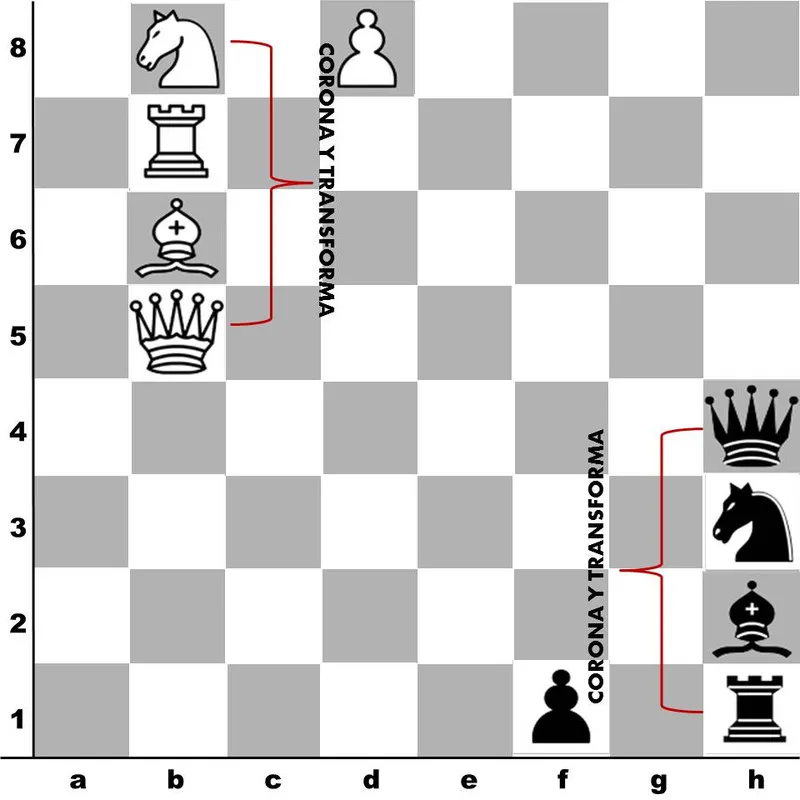 |  |
Movimiento Especial 2: “Captura al Paso o Peón al Paso”
En este caso, es otra de las cualidades exclusivas del Peón. Este movimiento tiene que ver con la Captura que realiza el Peón, es similar a lo explicado con anterioridad con respecto a la forma de “Comer” de esta pieza. Sin embargo, si se deben dar unas condiciones especiales, para que el Peón pueda capturar a pesar de que el peón contrario no esté ubicado justamente en la casilla diagonal inmediata. Es decir, este es un movimiento en el que el Peón puede capturar de manera especial a otro Peón.
La situación a la que hago referencia, se llama comúnmente “Peón al Paso” y es una captura de Peón de forma especial como se ha dicho. Es especial, porque se debe cumplir con algunas condiciones obligatorias como son:
* El Peón que ejecuta la jugada del Peón al Paso, debe estar ubicado en la 5ta fila.
* El Peón que se captura, debe hacer su movimiento inicial de 2 pasos justo al lado del Peón que está ubicado en la 5ta casilla (Condición anterior). Si este Peón, ya ha salido de su casilla de origen antes de que el Peón atacante llegue a la 5ta casilla, no procede la jugada de Peón al paso.
* El Peón que es capturado, debe ser el que esté ubicado en la columna vecina (derecha o izquierda) del Peón que está ubicado en 5ta casilla.
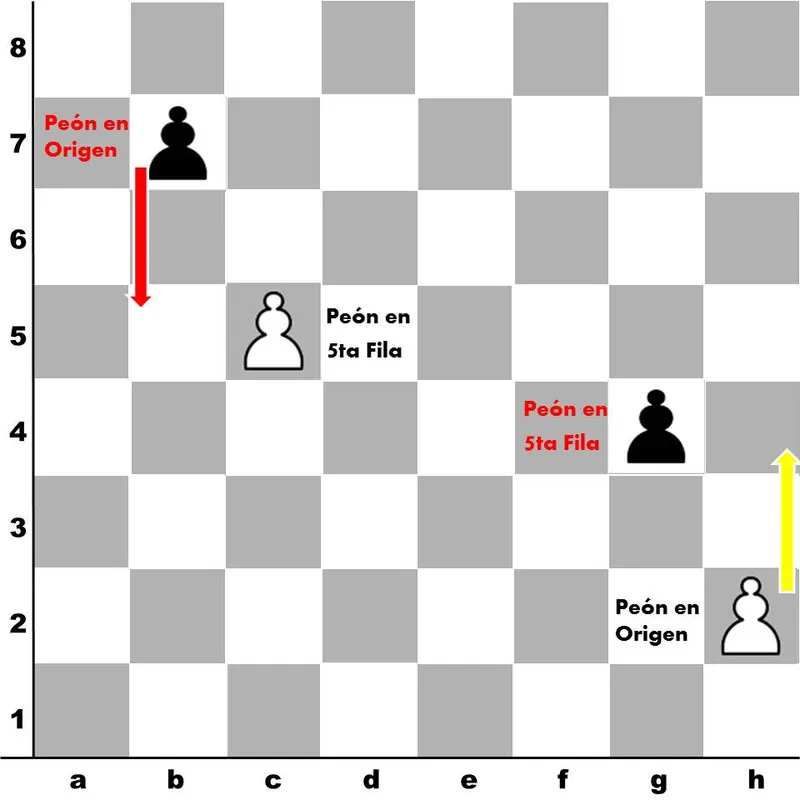 | 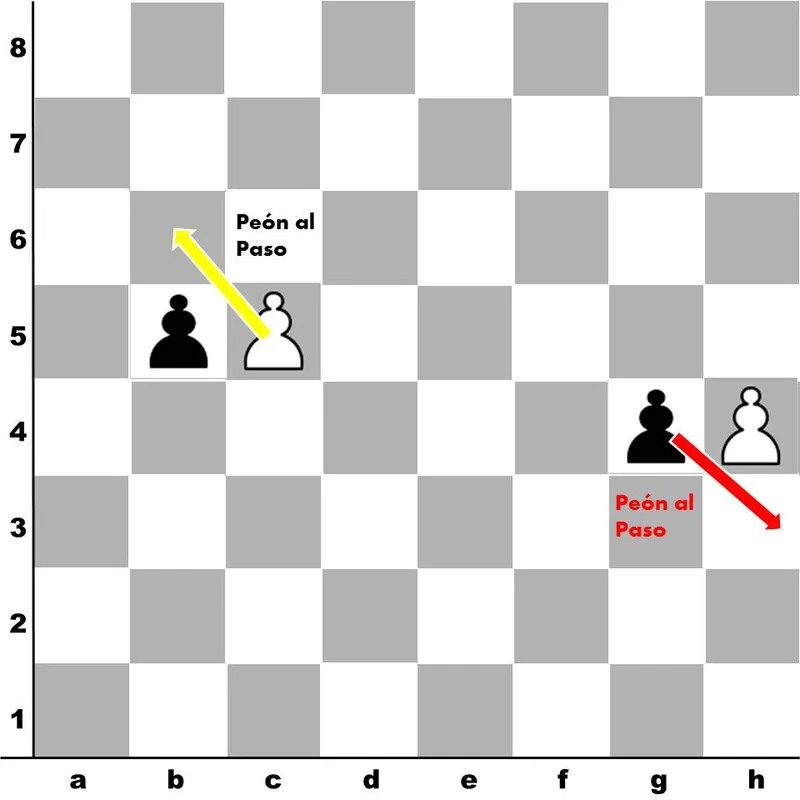 |
Es necesario señalar, esta situación solo se realiza entre peones para ser válida. Por lo tanto, no se realiza con otras piezas. Asimismo, es una jugada opcional porque el jugador del Peón atacante decide si hace la toma o no. Ahora bien, si el jugador decide hacerla, se debe realizar de forma inmediata, es decir, no se puede dejar pasar el turno porque de lo contrario, será inválida la realización de la jugada.
El procedimiento para realizar la “Captura”, después de asegurarnos cumplir con las condiciones anteriores; es como sigue a continuación: * El Peón que es capturado, se retira del tablero. * El Peón que captura, se ubica en la casilla superior diagonal inmediatamente superior, es decir, se coloca justo como si la captura del Peón contrario, se hubiese hecho con normalidad (como se explicó en el aspecto de la captura).

Por ahora, hasta aquí el movimiento de los Peones. No olvides que los peones son pequeños pero su fuerza no radica en ellos por individual, sino en el conjunto y en las posibilidades especiales que tiene. Así que si juegas con ellos, aprende que en la unión está la fuerza, no subestimes el poder que tienen ellos.

Me despido hasta una nueva oportunidad, no sin antes agradecer a personas como el amigo @schamangerbert por su reiterado apoyo, al amigo @stayoutoftherz quién apoya tanto a la comunidad ajedrecista. A @eturnerx, quien ha apoyado con su voto algunos de mis post.
Para ver la clase inicial, haz click aquí
Las referencias tomadas para esta publicación son de diferentes fuentes, en especial de los libros: José Raúl Ajedrecista, Preajedrez y Arbitraje para Docentes; todos del Uvencio Blanco
Las imágenes usadas han sido creadas por mí con el Programa PowerPoint (Excepto aquellas que poseen las fuentes).
The Pawn and its Power
 |  |
A hug to everyone who reads me, I wish you all the best!
Last week, I began with a publication about the science game, because for me, this sport is one of the most exciting and of great help for intellectual growth, especially for the youngest of the house. In that sense, I would like to write a little more about this sport known to all as “Chess”. Of course, I hope that many of you will be enthusiastic about practicing this, my favorite sport and with it, reaching your children wherever they are. That is why, in this and other publications, you will be able to find some necessary tools for understanding and understanding this wonderful game.
In the previous post (see here ), I told you a little about the game and its history, as well as the pieces to carry out the game. Of course, now correspondence to know, in what way each piece can move. On that occasion, I told you that each piece has a particular way of making its movement, so from this post, I will explain how each piece moves and of course, the way in which it captures during the game .
On this occasion, the main piece will be: The Pawn.

NUMBER OF PAWNS
It has already been said before that the game of chess takes place between 2 people and each one of them makes a move per turn. In addition, it was said that each player has a total of 8 pawns for each of his pieces. That is, the person who leads the white pieces has 8 white pawns and the person with black pieces has the same number (8) of black pawns. Likewise, it was explained that these pawns start arranged in the second "row" of the board for each side.
After a brief review of the pawns and their starting position, I can say that this piece has great potential in the game. However, for those who start learning about chess, they consider them without much value, of course, it is an appreciation that anyone could have, due to the size it has compared to the others and because of what has been said about the term pawn within wars in real life. As you get to know a little more about the game, you will find that this piece is not so weak after all.
Generally, the game begins with the movement of a Pawn. Mainly it is because, no piece can pass over others, with the exception of the Knight. So the best option is to start with one of the pawns to open the game. From there, the following movements can be made, proposing the best strategies that each person considers.

MOVEMENT AND CAPTURE OF THE PAWN
The Pawn is one of the slowest pieces in the game. It is considered slow, because its movement is quite restricted. In that sense, the Pawn move is as follows:
* It only moves in a straight line through columns and always forward, unless an opposing or own piece does not allow it.
* When in the initial square, any pawn can move 1 or 2 squares, depending on the player's decision and / or there are no other pieces to interrupt the advance.
* After making the initial move, you can only move by making 1 move per turn.
* The Pawn cannot move backwards. It is the only piece that cannot be moved back.
* If there is any part interrupting your movement, you will not be able to move forward (unless you can capture).
 |  |  |
As for the “Capture” of Pawn , it is done by changing a little the kinetics that was explained above. It is the only piece that, when “eating” another, must make a different movement from its original movement. In that sense, the Pawn Captures any piece like this:
* The Pawn can only Capture another piece, if the opposing piece is in the immediate diagonal square. That is, the pawn "eats" diagonally. NOTE: in the case of Capture with a Pawn or with any other piece, the procedure is to remove the captured piece from the board and place the piece with which it has been captured (in this case the Pawn) on the position in which the piece that was removed from the board was. That is, it is "eaten" on the site.
 |  |  |  |

SPECIAL MOVEMENT
At the beginning of this writing, I told you that the Pawn was considered weak by most chess players at the beginning. Well, to be honest, the pawn being alone, does not have the strength that another piece can have on the board, as you have already seen, even its movements are quite restricted. However, in particular, I consider that the pawns when they are united, that is, when they are no longer alone, have great strength, since they can support each other and sometimes they can beat pieces that are said to be superior to them. . For this reason, it is recommended during games to keep the pawns together for as long as necessary.
Of course, the above has to do with strength as a whole. Now, in this aspect I am going to explain some special characteristics that the Pawn has and therefore, it can be without fear of being wrong, the strongest piece on the chessboard at the moment one of these special moves is executed. I have said special moves, however, it really is a move and a catch with different characteristics than what I have already pointed out. In that sense, I proceed to explain below:
Special Movement 1: "Promotion or Coronation"
This is a peculiarity of the Pawn, it is here that I have said that this piece can be superior to anyone. The situation arises only when a Pawn during the game advances to the last square (first row of the opposing player) of the column through which it moves, either by its own movement or by capturing a piece. In this case, once the last square has been reached (in the example it is square 8) said Pawn can be exchanged for any other piece (Rook, Knight, Bishop or Queen) according to what the player who directs the Pawn considers.

This game situation is called "Coronation" or "Promotion" and proceed if:
* Any Pawn that reaches the 8th rank can be transformed into any piece except the King or another Pawn.
* The Player of the Pawn who “kings” demands which piece he decides to exchange his Pawn for. Usually, it is asked to change for the Lady. Although according to the position of the game, another piece may be necessary to win.
* The Pawn that "Crown" is removed from the board and in its position, the piece that has been chosen for said transformation is placed immediately.
NOTE: In the event that a Pawn is crowned, the requirements of the player carrying said Pawn must be met. If, for example, said player still has his Queen and he demands to transform his Pawn into a Queen, another Queen must be found for him from any unoccupied board. In that sense, if there is the possibility, that a player will crown his 8 pawns (very unlikely) this player has the right to demand 8 Checkers. Of course, also with the Rook, Bishop or Knight.
 |  |
Special Move 2: "Capture in Pass or Pawn in Pass"
In this case, it is another of the unique qualities of the Pawn. This movement has to do with the Capture made by the Pawn, it is similar to what was explained previously with respect to the way of "Eating" of this piece. However, if special conditions must be met, so that the Pawn can capture even though the opposing pawn is not located exactly in the immediate diagonal square. That is, this is a move in which the Pawn can capture another Pawn in a special way.
The situation to which I refer, is commonly called "Pawn in Passage" and is a capture of Pawn in a special way as has been said. It is special, because it must meet some mandatory conditions such as:
* The Pawn that executes the Move Pawn move, must be located in the 5th row.
* The Pawn that is captured must make its initial 2-step move right next to the Pawn that is located on the 5th square (Previous condition). If this Pawn has already left its square of origin before the attacking Pawn reaches the 5th square, the Pawn move does not proceed.
* The Pawn that is captured must be the one located in the neighboring column (right or left) of the Pawn that is located in the 5th square.
 |  |
It is necessary to point out, this situation is only done between pawns to be valid. Therefore, it is not done with other parts. Likewise, it is an optional move because the attacking Pawn player decides whether to make the take or not. Now, if the player decides to do it, it must be done immediately, that is, the turn cannot be missed because otherwise the play will be invalidated.
The procedure to perform the "Capture", after ensuring that we comply with the above conditions; it is as follows: * The Pawn that is captured is removed from the board. * The Pawn that captures is located in the upper diagonal square immediately above, that is, it is placed just as if the capture of the opposing Pawn had been done normally (as explained in the capture aspect).

For now, so far the movement of the Pawns. Do not forget that the pawns are small but their strength does not lie in them individually, but in the group and in the special possibilities they have. So if you play with them, learn that in the union is strength, do not underestimate the power they have.

I say goodbye until another opportunity, but not before thanking people like the friend @schamangerbert for his repeated support, the friend @stayoutoftherz who supports the chess community so much. To @eturnerx, who has supported with his vote some of my posts.
To see the initial class, click here
The references taken for this publication are from different sources, especially from the books: José Raúl Ajedrecista, Prejedrez y Arbitraje para Educadores; all from Uvencio Blanco
The images used have been created by me with the PowerPoint Program (Except those that have the sources).

